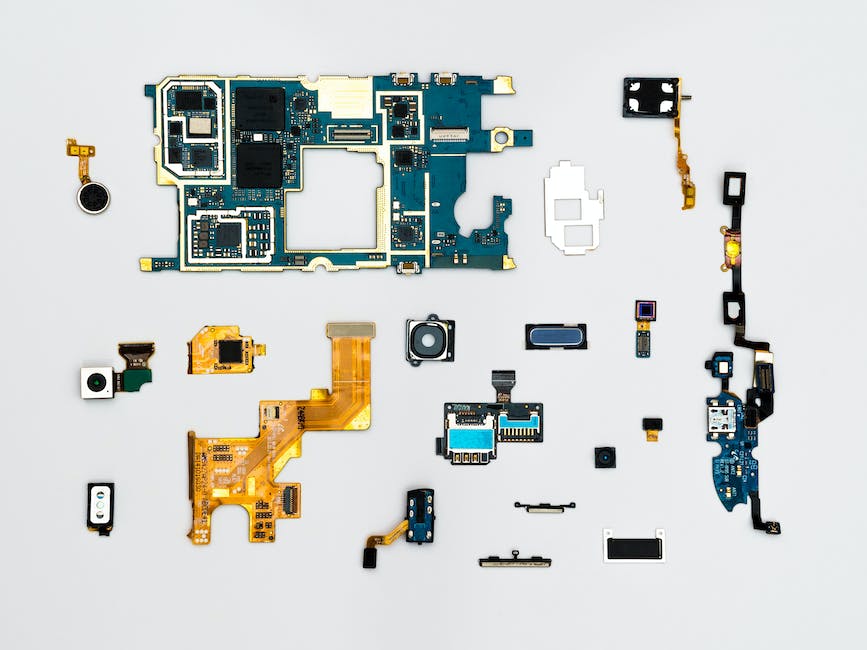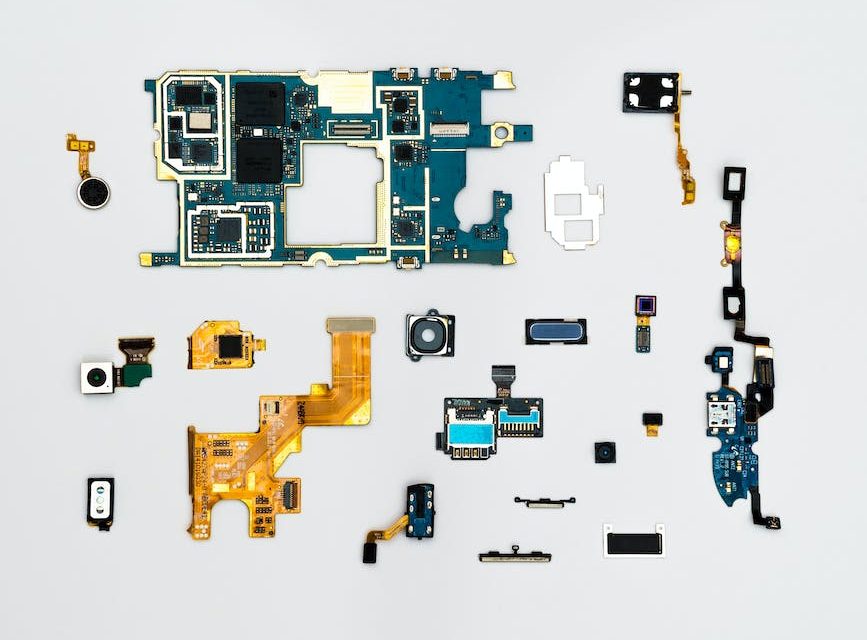Table of Contents
“Transforming Leadership: Embracing the Power of Technology”
Introduction
Technology has revolutionized various aspects of our lives, including the way we lead and manage teams. With the rapid advancements in technology, leadership styles have also evolved to adapt to the changing landscape. This introduction will explore how technology is transforming leadership styles, enabling leaders to be more agile, collaborative, and inclusive in their approach. From the use of digital tools for communication and decision-making to the rise of remote work and virtual teams, technology has undoubtedly reshaped the way leaders lead and interact with their teams.
The Impact of Artificial Intelligence on Leadership Styles

The Impact of Artificial Intelligence on Leadership Styles
Artificial Intelligence (AI) has become an integral part of our lives, transforming various industries and sectors. One area where its impact is particularly significant is in leadership styles. As AI continues to advance, it is reshaping the way leaders operate and make decisions. This article explores the ways in which technology is changing leadership styles, with a specific focus on the impact of AI.
One of the key ways in which AI is influencing leadership styles is through data analysis. AI has the ability to process vast amounts of data in a fraction of the time it would take a human. This enables leaders to make more informed decisions based on data-driven insights. By leveraging AI, leaders can identify patterns, trends, and correlations that may not be immediately apparent to the human eye. This data-driven approach allows leaders to make more accurate predictions and develop strategies that are grounded in evidence.
Furthermore, AI is also changing the way leaders communicate and collaborate with their teams. With the advent of virtual assistants and chatbots, leaders can delegate routine tasks and focus on more strategic initiatives. These AI-powered tools can handle administrative duties, such as scheduling meetings and answering basic inquiries, freeing up leaders’ time to engage in more meaningful interactions with their teams. This shift in responsibilities allows leaders to focus on building relationships, providing guidance, and fostering a collaborative work environment.
In addition to data analysis and communication, AI is also impacting leadership styles through its ability to automate processes. AI-powered automation tools can streamline repetitive tasks, reducing the need for manual intervention. This not only increases efficiency but also allows leaders to allocate their time and resources to more complex and strategic endeavors. By automating mundane tasks, leaders can focus on higher-level thinking, problem-solving, and innovation.
However, it is important to note that the integration of AI into leadership styles is not without its challenges. One of the main concerns is the potential for bias in AI algorithms. If the data used to train AI systems is biased, it can perpetuate and amplify existing biases in decision-making processes. This can have serious implications for diversity and inclusion efforts within organizations. Leaders must be aware of these biases and take steps to mitigate them, ensuring that AI is used in a fair and ethical manner.
Another challenge is the potential for job displacement. As AI continues to automate tasks, there is a fear that it may replace human workers, leading to job losses. However, it is important to recognize that AI is not meant to replace humans but rather augment their capabilities. Leaders must embrace AI as a tool that can enhance their decision-making and productivity, rather than viewing it as a threat.
In conclusion, AI is revolutionizing leadership styles by enabling data-driven decision-making, transforming communication and collaboration, and automating processes. While there are challenges associated with the integration of AI, leaders must embrace this technology and leverage its capabilities to drive innovation and success. By understanding and adapting to the changing landscape of leadership in the age of AI, leaders can position themselves and their organizations for future growth and prosperity.
Embracing Remote Work: Technology’s Influence on Distributed Leadership
In recent years, technology has revolutionized the way we work. With the rise of remote work, leaders are now faced with the challenge of managing teams that are spread across different locations. This shift has led to the emergence of distributed leadership, a style that relies heavily on technology to facilitate communication and collaboration. In this article, we will explore how technology is changing leadership styles, specifically in the context of embracing remote work.
One of the key ways technology is influencing distributed leadership is through the use of virtual communication tools. In the past, leaders would rely on face-to-face meetings and phone calls to communicate with their teams. However, with the advent of video conferencing platforms like Zoom and Microsoft Teams, leaders can now connect with their team members in real-time, regardless of their physical location. This has made it easier for leaders to stay in touch with their teams and provide guidance and support when needed.
Another way technology is changing leadership styles is through the use of project management tools. These tools allow leaders to assign tasks, set deadlines, and track progress, all in one centralized platform. This not only helps leaders keep track of their team’s work, but it also allows team members to collaborate more effectively. With project management tools, leaders can easily delegate tasks and ensure that everyone is on the same page, even when working remotely.
Furthermore, technology has also enabled leaders to foster a sense of community and belonging among remote teams. In the past, remote workers often felt isolated and disconnected from their colleagues. However, with the rise of social networking platforms like Slack and Microsoft Teams, leaders can now create virtual spaces where team members can connect and engage with one another. These platforms allow for informal conversations, team-building activities, and the sharing of ideas and resources. By leveraging technology, leaders can create a sense of camaraderie and collaboration, even when team members are physically apart.
Additionally, technology has made it easier for leaders to provide feedback and recognition to their remote teams. In the past, leaders would have to rely on annual performance reviews or sporadic emails to provide feedback. However, with the use of collaboration tools and project management software, leaders can now provide real-time feedback and recognition to their team members. This not only helps improve performance and productivity but also boosts morale and engagement among remote workers.
In conclusion, technology has had a profound impact on leadership styles, particularly in the context of embracing remote work. Through the use of virtual communication tools, project management software, and social networking platforms, leaders can now effectively manage and lead teams that are spread across different locations. This shift towards distributed leadership has not only improved communication and collaboration but has also fostered a sense of community and belonging among remote workers. As technology continues to evolve, it is likely that leadership styles will continue to adapt and change, further enhancing the way we work in a remote and digital world.
Leveraging Big Data and Analytics for Effective Leadership Decision-making
In today’s fast-paced and data-driven world, technology has become an integral part of our lives. It has not only transformed the way we communicate and work but has also revolutionized the way leaders make decisions. One of the key ways technology is changing leadership styles is through the leveraging of big data and analytics for effective decision-making.
Big data refers to the vast amount of information that is generated every day from various sources such as social media, sensors, and online transactions. This data is often unstructured and complex, making it difficult to analyze and derive meaningful insights from. However, with the advancements in technology, leaders now have access to powerful tools and algorithms that can process and analyze this data in real-time.
By leveraging big data and analytics, leaders can make more informed and data-driven decisions. They can identify patterns, trends, and correlations that were previously hidden, enabling them to gain a deeper understanding of their organization and the market. For example, by analyzing customer data, leaders can identify customer preferences, buying patterns, and potential areas for growth. This information can then be used to develop targeted marketing strategies and improve customer satisfaction.
Furthermore, big data and analytics can also help leaders identify potential risks and opportunities. By analyzing historical data and market trends, leaders can anticipate changes in the market and make proactive decisions to stay ahead of the competition. For instance, by analyzing sales data and customer feedback, leaders can identify potential product issues and address them before they become major problems.
In addition to improving decision-making, big data and analytics can also enhance leadership effectiveness. By providing leaders with real-time insights and feedback, technology enables them to monitor and evaluate their performance more effectively. For example, leaders can use analytics tools to track key performance indicators (KPIs) and measure their progress towards organizational goals. This allows them to identify areas for improvement and make necessary adjustments to their leadership style.
Moreover, technology also enables leaders to collaborate and communicate more effectively with their teams. With the advent of virtual collaboration tools and platforms, leaders can now connect with their team members regardless of their physical location. This not only improves communication but also fosters a sense of inclusivity and teamwork. Leaders can use these tools to share information, delegate tasks, and provide feedback, thereby enhancing team productivity and engagement.
However, it is important to note that while technology can greatly enhance leadership decision-making, it should not replace human judgment and intuition. Leaders must still rely on their experience, expertise, and values to make the final decisions. Technology should be seen as a tool that complements and supports their decision-making process, rather than replacing it.
In conclusion, technology is changing leadership styles by leveraging big data and analytics for effective decision-making. By analyzing vast amounts of data, leaders can gain valuable insights into their organization and the market, enabling them to make more informed and data-driven decisions. Furthermore, technology also enhances leadership effectiveness by providing real-time feedback and enabling effective collaboration and communication. However, it is important for leaders to remember that technology should be used as a tool to support their decision-making process, rather than replacing their judgment and intuition.
The Role of Technology in Fostering Collaborative Leadership
The Role of Technology in Fostering Collaborative Leadership
In today’s fast-paced and interconnected world, technology has become an integral part of our daily lives. It has not only transformed the way we communicate and access information but has also revolutionized the way we work and lead. One area where technology has had a significant impact is in fostering collaborative leadership.
Collaborative leadership is a style of leadership that emphasizes teamwork, cooperation, and shared decision-making. It is based on the belief that the best results are achieved when individuals work together towards a common goal. Technology has played a crucial role in enabling and enhancing this style of leadership.
One way technology has fostered collaborative leadership is by breaking down geographical barriers. In the past, leaders were often limited to leading teams that were physically located in the same office or building. However, with the advent of technology, leaders can now lead teams that are spread across different locations, even different countries. Video conferencing, instant messaging, and project management tools have made it easier than ever for leaders to communicate and collaborate with their teams, regardless of their physical location.
Another way technology has fostered collaborative leadership is by providing platforms for virtual collaboration. Virtual collaboration refers to the ability of individuals to work together on projects and tasks without being physically present in the same location. Platforms such as Google Docs, Trello, and Slack have made it possible for teams to collaborate in real-time, share documents, and track progress. This has not only increased efficiency but has also encouraged greater participation and engagement from team members.
Furthermore, technology has facilitated the sharing and dissemination of information, which is essential for collaborative leadership. Leaders can now easily share important documents, reports, and updates with their teams through email, cloud storage, or project management platforms. This ensures that everyone is on the same page and has access to the information they need to make informed decisions. Additionally, technology has made it easier for team members to share their ideas, feedback, and suggestions, fostering a culture of open communication and collaboration.
Moreover, technology has enabled leaders to gather and analyze data, which is crucial for effective decision-making. With the help of data analytics tools, leaders can now collect and analyze vast amounts of data to gain insights into team performance, customer behavior, and market trends. This data-driven approach allows leaders to make informed decisions and identify areas for improvement, ultimately leading to better outcomes for the team and the organization as a whole.
However, it is important to note that while technology has undoubtedly enhanced collaborative leadership, it is not a substitute for effective leadership skills. Technology should be seen as a tool that supports and enhances leadership practices, rather than replacing them. Leaders still need to possess strong communication, interpersonal, and problem-solving skills to effectively lead and collaborate with their teams.
In conclusion, technology has played a significant role in fostering collaborative leadership. It has broken down geographical barriers, provided platforms for virtual collaboration, facilitated the sharing of information, and enabled data-driven decision-making. However, it is important for leaders to remember that technology is a tool and should be used in conjunction with effective leadership skills. By embracing technology and leveraging its capabilities, leaders can create a collaborative and inclusive work environment that drives innovation and success.
Q&A
1. How is technology changing leadership styles?
Technology is enabling leaders to communicate and collaborate more effectively, leading to more decentralized and inclusive leadership styles.
2. What are some examples of how technology is changing leadership styles?
Technology allows leaders to connect with employees remotely, use data analytics for decision-making, and leverage automation for more efficient operations.
3. What are the benefits of technology in changing leadership styles?
Technology enables leaders to be more agile, adaptable, and responsive to changing business environments. It also promotes transparency and enhances communication within organizations.
4. Are there any challenges associated with technology changing leadership styles?
Yes, some challenges include the need for leaders to adapt to new technologies, potential information overload, and the risk of dehumanizing leadership interactions in virtual environments.
Conclusion
In conclusion, technology is significantly changing leadership styles. It has enabled leaders to be more flexible, collaborative, and inclusive in their approach. The use of digital tools and platforms has facilitated remote work, improved communication, and enhanced decision-making processes. Additionally, technology has also increased the need for leaders to be adaptable, innovative, and tech-savvy. As technology continues to evolve, it will continue to shape and redefine leadership styles in the future.






Recent Comments